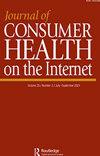遗传学的终结:设计人类的DNA
IF 0.7
Q4 PUBLIC, ENVIRONMENTAL & OCCUPATIONAL HEALTH
引用次数: 2
摘要
David B.Goldstein是John E.Borne遗传学与发展教授,也是哥伦比亚大学医学中心基因组医学研究所所长。戈尔茨坦在他的新书《遗传学的终结:设计人类的DNA》中强调,公众需要更广泛地了解遗传学的基本科学。父母很快就能从大的和小的方面决定孩子的基因构成。这些决定将导致一种新的遗传学,戈尔茨坦的目标是让非科学家参与这些变化。本书分为五章:《复制的未来》;学习阅读人类基因组;人类基因变异的本质;DNA与人类疾病;以及撰写《我们孩子的基因组》——以笔记、参考书目和索引结尾。戈尔茨坦包括遗传学简史、读者的思想实验以及真实个体基因组突变的例子。戈尔茨坦意识到了他的读者——在一个更复杂的话题开始时,他会回到更容易理解的信息中,这让他们放心。虽然他花时间来定义这些复杂的主题和单词,但读者确实需要对科学语言有一些认识。他还认识到,一些读者可能更熟悉遗传学,并提出了其他阅读建议。虽然书中讨论的大部分内容都可以被认为是优生学,但戈尔茨坦对负面含义很敏感,并决定将其称为复制基因组设计。当他分享自己的个人观点与事实时,他会指出——这些观点在他的笔记和参考书目中都有很好的详细说明。遗传学研究的进展比预期的要快,而且存在知识差距,这使得科学家很难预测我们行为的后果。戈尔茨坦希望通过让非科学家了解潜在的科学,带领父母做出明智的决定,影响我们物种的未来。戈尔茨坦做得很好,让一个复杂的、潜在的、压倒性的话题能够被更广泛的观众所接受。这本书推荐给所有有公共卫生收藏的图书馆。本文章由计算机程序翻译,如有差异,请以英文原文为准。
The End of Genetics: Designing Humanity's DNA
David B. Goldstein is the John E. Borne Professor of Genetics and Development and director of the Institute for Genomic Medicine at Columbia University Medical Center. In his new book, The End of Genetics: Designing Humanity’s DNA, Goldstein emphasizes the need for more extensive understanding of the underlying sciences of genetics by the general public. Parents will soon be able to decide on the genetic makeup of their children in both large and small ways. These decisions will lead to a new kind of genetics and Goldstein’s goal is to empower non-scientists to be a part of these changes. The book is divided into 5 chapters The Future of Reproduction; Learning to Read the Human Genome; The Nature of Human Genetic Variation; DNA and Human Disease; and Writing the Genomes of Our Children – concluding with notes, a bibliography and index. Goldstein includes a brief history of genetics, thought experiments for the reader, and examples of genome mutations in real individuals. Goldstein is cognizant of his reader – reassuring them as begins a more complex topic that he will be returning to easier to understand information. While he takes the time to define these complex topics and words, the reader does need to have some awareness of scientific language. He also recognizes that some readers may be more familiar with genetics and offers alternative reading suggestions. While much of what is discussed in the book can be considered eugenics, Goldstein is sensitive to the negative connotation and makes the decision to refer to it as reproducted genome design. He points out when he is sharing his personal opinion versus facts – which are well detailed in his notes and bibliography. Genetics research has moved faster than expected and there are gaps in knowledge that make it difficult for scientists to anticipate the consequences of our actions. By empowering non-scientists to understand the underlying science, Goldstein hopes to lead parents to make informed decisions that will impact the future of our species. Goldstein has done a good job making a complicated and potentially overwhelming topic accessible to a broader audience. This book is recommended for all libraries with public health collections.
求助全文
通过发布文献求助,成功后即可免费获取论文全文。
去求助
来源期刊

Journal of Consumer Health on the Internet
PUBLIC, ENVIRONMENTAL & OCCUPATIONAL HEALTH-
CiteScore
1.30
自引率
12.50%
发文量
32
期刊介绍:
The Journal of Consumer Health on the Internet is the only professional peer-reviewed journal devoted to locating consumer health information via the Internet. In this journal librarians and health information providers describe programs and services aimed at helping patients and the general public find the health information they need. From the Editor: "Studies have shown that health information is one of the major reasons that people worldwide access the Internet. As the amount of health information on the Web increases exponentially, it becomes critical that librarians-including public and medical librarians-be knowledgeable about what is available online and be able to direct users to reliable, accurate, quality information."
 求助内容:
求助内容: 应助结果提醒方式:
应助结果提醒方式:


